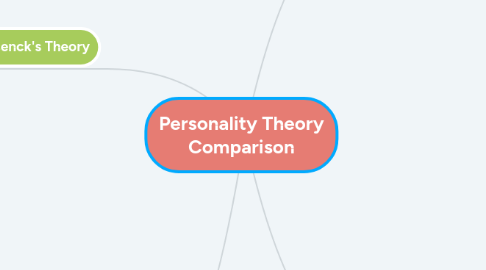
1. Horney's Theory
1.1. Life Influences
1.1.1. Karen Horney herself, experienced depression throughout her life. In-coincidentally, her theory on personality development was focused on mental health (basic anxiety) and the importance of how it was coped with in our childhood.
1.2. Perspective on Development of Personality
1.2.1. According to Kendra Cherry, Horney believed that as children, we experienced difficult interpersonal relationships, causing "basic hostility". Any basic hostility that was left unresolved, caused the development of what she called, "basic anxiety". As children, being unaware of what's occurring, there was a necessity of finding ways to unconsciously cope with the basic anxiety that was being experienced. Which then led to the lack of certain neurotic needs. The desire of satisfying those certain neurotic needs is what built our personality, according to her theory (Cherry, K. 2019, July 15).
1.3. View of Human Nature
1.3.1. Her view of human nature was based upon social and cultural influences rather than biological influences.
1.4. Influence on the Field of Psychology
1.4.1. Her major contributions to psychology were Feminine Psychology, her Theory of Neurotic Needs, and Neo-Freudian Psychology.
2. Jung's Theory
2.1. Life Influences
2.1.1. Carl Jung was fond of Freud's theory and work. He eventually became very close with Freud due to their similar interests in the unconscious mind. However, Jung publicly disagreed and criticized Freud's theory of the Oedipus Complex. Which led them to go their separate ways, encouraging Jung to create his own psychoanalytic theory.
2.2. Perspective on Development of Personality
2.2.1. According to Saul McLeod, Jung's perspective on the development of personality is that our behavior comes from past childhood experiences but also from our future aspirations. This idea was built on his curiosity of the unconscious mind. Jung believed that the unconscious mind was made up of 3 systems, the ego, the personal unconscious, and the collective unconscious. Here is where it gets interesting. The personal unconscious is made up of forgotten information/ repressed memories and the collective unconscious is made up of shared experiences from our ancestral past. All of which, according to Jung, play a role in the development of our personalities. (McLeod, S. A. 2018, May 21).
2.3. View of Human Nature
2.3.1. Jung's view of human nature was a balance of both social and biological influences. He believed that we are still influenced by our own personal experiences. However, he also believed that a part of our unconscious is influenced by our ancestral past.
2.4. Influence on the Field of Psychology
2.4.1. Carl Jung's contribution to psychology was his Theory of the Conscious/Unconscious Mind, his idea of archetypes, his Introversion vs. Extroversion Theory, and his psychological perspective on the significance of dreams.
3. Eysenck's Theory
3.1. Life Influences
3.1.1. According to Saul McLeod, Hans Eysenck worked at the Maudsley psychiatric hospital in London during the 1940's. His job was to take an assessment of each patient before seeing a psychiatrist to diagnose them with a specific mental disorder. While doing so, he became curious in human behavior which led him to create a study using 700 soldiers which led him to the birth of his theory of personality traits. (McLeod, S. A. 2017)
3.2. Perspective on Development of Personality
3.2.1. Eysenck's perspective on the development of personality is that our personality is developed by biological factors that are inherited. According to Saul McLeod, Eysenck believed that we inherit a type of nervous system that affects the way we learn and the way we adapt to our environment(s). His theory states that there are first order personality traits and there are second order personality traits. First order personality traits are personality traits that can be revealed through questionnaire (question and answer). Second order personality traits are discovered through factor analysis which analyzes behavior and grouping them into separate dimensions. (introversion vs. extroversion), (psychoticism vs. normality), and (neuroticism/stability). Nonetheless, Eysenck believed that all personality traits were able to be traced back to a biological cause. (McLeod, S. A. 2017)
3.3. View of Human Nature
3.3.1. Eysenck's view of human nature consisted of both nature and nurture. Although his theory moreso strongly agrees that our personality is due to biological influences, he still believed that social influences from our childhood also play a role in personality development.
3.4. Influence on the Field of Psychology
3.4.1. Hans Eysenck's contribution to psychology was his theory on personality and intelligence.

